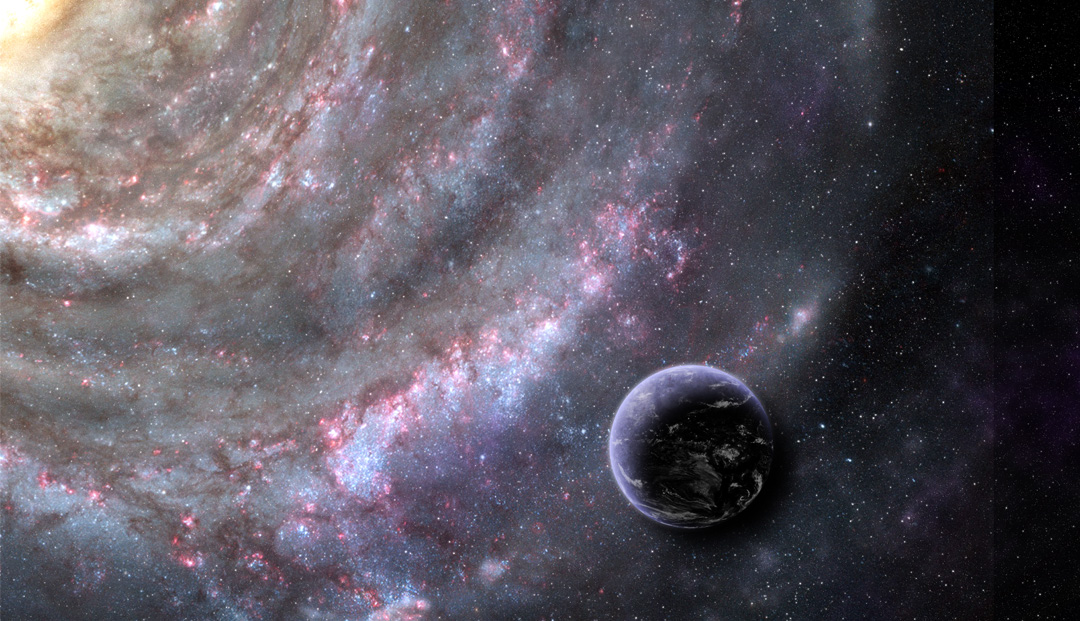
Greetings, traveller! This week, on our deep dive into Battle Systems lore, we’ll be exploring how Mesa, the world of Maladum, came to be, from its pinnacle as a hub in the galaxy to becoming a forgotten medieval world rife with magic. We’ll also talk about the early conception of Maladum and how it was refined into what we know today.
The Fall Of Mesa
The world of Mesa was once part of a vast galactic web. For thousands of years it dominated its sector of space utilising technology from many different species. At its height Mesa’s central source of power was from a network of relays encircling the local star. The relays transmitted refined plasma to mile-high Transmitter Towers which then channelled power around the world feeding the energy-hungry nations. But technology itself would be Mesa’s undoing when a synthetic organism swept through Mesa destroying all advanced technology. The rogue organism had no objective but to rend all that it touched into base components. Afraid of contamination the galaxy placed Mesa in quarantine, the inhabitants left to their fate. Over time Mesa was forgotten and the survivors learned to live in a new dark age without technology or limitless power; the era of technology dismissed as myth, as a bygone Age of Magic.
This cataclysm was known as the Fall.
The Fall Of Mesa – A Maladum Short Story
The morning sunlight glittered off the glass towers as L’eet strode through the city centre. The heat shimmer from the ground was offset by the fresh breeze from the coast, the slab dust mingled with the ocean in his nostrils. He was an Ech Triune, tall and slim, at least a head taller than the humans who made up the majority here. The city architects favoured clean lines and aesthetics where his own people preferred stark modularity but his tailored genome made him more able to appreciate the beauty around him, to breathe in the clean air and enjoy the walk. Traffic filtered almost noiselessly, controlled by a central authority, the drivers subservient while in the authority’s domain. In the distance, looming over the glass towers was an obelisk, a vast mile high transmission tower that funnelled refined plasma from Mesa’s star down to the energy hungry planet below. This was Mesa at its height, the world at the centre of a galactic hub, where everything worked.
L’eet also worked, and he soon reached the research and development block, passing into the shadow of the cool atrium, through security and into the vast elevator down to the twentieth sub-basement where he was stationed. Most of the people who worked here were Ech Triune, his people were born, even engineered, to be scientists. He was expected to follow a long tradition of research, but the genetic quirk that gave him the bright grey eyes his brood mother was so proud of, the human eyes, also gave him the artistic whimsy that his clone fathers did not approve of. Genetic tampering was expected for one of his rank and the odd throwback was grudgingly accepted but not encouraged.
L’eet worked in the genetic research laboratory of the block. Down here, deep under the ground where it was ordered and sterile, experiments could be conducted without interference. He would try to ignore the cries of small animals and the occasional spatter of blood in the otherwise clean environment. He knew his empathy for the lab creatures would be considered a sign of instability so he kept his doubts to himself, his own people would not understand that their actions could be considered cruel in their pursuit of knowledge. He would rather create art than make science but he knew better than to make waves, he kept his head down, he did the work expected of him, he was adequate but did not excel.
It had started as a normal day but at lunch time he passed two human security guards talking quietly, his ears able to understand them perfectly even when they were far down the corridor.
“There’s been a communications blackout. Widespread destruction across -“
“Keep your voice down, you never know who’s listening.”
L’eet was shocked but said nothing, did not betray his feelings to anyone. The city was stable, as was the whole continent, as was the whole of Mesa, unchanging and eternal, barely different from the days of his forefathers. Why would there be a communications blackout?
At the end of his dayshift he headed back to the atrium to find that there was a delay, security were having trouble letting people out of the building. There was an excited murmur from the workers, normally everything worked as planned, with no hitches, mistakes were unforgivable. The automatic system was down so security were buzzing out employees one by one after a cursory check. This slap-dash approach disturbed L’eet, and outside, on the streets, that unease increased. His internet connection was down, the constant news stream that normally tickered into his communications feed had been broken. People hurried to and fro, but their movements seemed random, not the usual easy stride of those going home or planning an evening meal in the city. There was an uncertainty in the air, people avoided eye contact and he was jostled by strangers pushing roughly past him, the decorum expected in public forgotten. The traffic on the roads had ground to a halt, the drivers leaning angrily onto their horns. L’eet wanted to get out of the city but he fought against a wave of people trying to do the same.
After a few minutes his ears picked up the distant sounds of a scuffle, people running and shouting. He saw pedestrians fall into the road and being trampled by others. He looked around in confusion, trying to find the cause of panic. High above screamed a shuttle on fire, it arced across the sky, exploding as it crashed into a tower. Debris fell in slow motion as he looked on, aghast. People were shrieking, smoke and fire everywhere. L’eet bleated in fear, but resisted the urge to cringe into a ball and instead fled down the street, leaping effortlessly over cars and pedestrians. His kind were capable of incredible athleticism but it was considered uncouth in company but here it saved his life, the slow moving humans caught by the wreckage of the falling shuttle.
Billows of dust choked him and he willed his nostrils into thin slits. He wandered in a daze and when the dust cleared he saw that he was within walking distance of one of the transmission towers. The tower looked wrong. It was no longer receiving plasma, which was unheard of, the plasma flow never stopped. There were splits up its blank facade and as he watched pieces seemed to shear away. The tower looked like it was crystallising, the shining white surface turning a dull matte grey. With an ear splitting crack the tower split and started falling towards the screaming crowds below. L’eet, ran, not away from the tower, but down a side road. He leaped over the cars and trod on people using them as springboards to escape. He registered the shame but pushed it aside, shame was a poor second to his survival instincts. The tower collapsed and grey shards splintered into the air. He looked back in dismay, at the dust and flames, how could this be happening?
Much further down the road the damage was less extensive, no collapsed buildings, just abandoned vehicles. One was lying on its back the roof crushed in. He could see an arm waving limply from the remains of a window and was shocked to find the driver was alive.
“Hold still, friend, I’ll get you out!”
Bracing his long limbs L’eet pushed his back against the vehicle and was able to lift it just enough for the driver, a human male, to crawl out. The man was cut and bruised but seemed otherwise uninjured. L’eet lowered the vehicle and started to laugh, he was so relieved to see another living being. The man looked at him but didn’t speak, he was having trouble breathing. He looked like he was trying to say something but there was no sound. His eyes darted around, bulging as if he held in a great pressure. He clutched at his arm and L’eet could see the same crystallisation on the man’s hand that had destroyed the tower. The grey crystal spread rapidly across the man’s chest and pieces of him broke off as if he were made of petrified stone. The man exploded into grey dust and L’eet turned and ran.
An hour later he was at the city’s edge, high up on a hillside. The sun had set and he could see that the city was on fire. The creeping grey dust travelled down the streets as if it had a will of its own. Other buildings were collapsing, he could see them fall one by one, the distant sounds of mass destruction creating an unreal nightmare that he couldn’t wake up from. He turned at the roar of rockets to see in the distance shuttles fly up into the sky, fireworks escaping the madness. The space port! He forced his tired muscles on for one last burst towards the fleeing shuttles.
By the time he got to the spaceport the shuttles had stopped firing and he feared he had missed his ride off- world. There was no security, the space port was deserted his feet the only sound in the vast emptiness, and he made his way to the shuttles without seeing a single person. The destruction here was just that of escape, objects knocked over, baggage left behind, broken bottles and liquids spilled, not the destruction of whatever the creeping grey was.
The first four shuttles had already been launched, the fifth wouldn’t initialise. He didn’t have the access codes. In desperation he cut his palm on a jagged piece of glass and spread it on the access panel hoping the nanites in his blood would be able to override the program but his authority level was too low. He crouched down, defeated and bleated quietly to himself. The contagion would spread to here and he would be done, dead like all the rest. In the eerie quiet he noticed a low automated voice repeating the same message over and over. He looked around trying to trace its source and thought he could see something, far down the departure lounge, almost out of sight. He trotted to the far shuttles, the voice increasing in volume as he approached. The very last shuttle announced that it was ready to leave but there was a blockage. He found a corpse lying across the bay doorway, a small grey variant of his species. The body was preventing the automatic countdown. L’eet unceremoniously tossed the corpse aside and the doors closed and the countdown started. He strapped himself in, he was the only passenger where there was room for fifty.
The emergency shuttle roared into the air, archaic rocket fuel favoured over the electric motors of smaller vehicles. Exhausted, L’eet passed out and didn’t wake until the shuttle was engaged with the orbital station. He staggered out of the shuttle into the station but there was no one there. He could see through the portals to space that the ships that should be tethered there were gone, everyone had fled and he was alone. He stood at the observation bay looking down at Mesa. It was beautiful, and austere, the most powerful world in this sector, too important to fail but it was failing. Was this happening the world over?
There was an ominous creaking and L’eet turned to see that the contagion had come with him, grey shards cracking the station and turning it to inert dust. The contagion ran across the floor and caught him. He stood, unable to move as it spread up his body, first agonising then strangely numbing as his nervous system was dismantled. The bay window cracked and with a tremendous effort he turned and pushed himself towards it. He broke through the damaged glass, out into space.
In the vacuum the grey slowed and stopped spreading, the crystals replaced with the ice of space. In his final moments L’eet looked down at Mesa, the majestic world now riddled with cancer. There he would stay, in orbit forever, his sightless eyes watching the slow evolution of Mesa for thousands of years to come.
After The Fall
Grey dust covered the world, choking the air and bringing about a nuclear winter. Millions die but many survive, the hardiest and the lucky cling to life. Thousands of years pass and the inhabitants of Mesa no longer remember technology or that they were once part of a larger universe. The grey dust has long been buried by shifting strata and the people of Enveron, isolated from other continents by distance, begin to prosper thanks to its forgiving climate and geological stability. To these people Enveron is their whole world.
Pieces of the old world also survived and would eventually form Maladum, the basis of all magic. In Enveron magic is a real thing, allowing the users to manipulate reality through force of will, although they are ignorant of it true nature, that it is the re-emergence of a dormant technology. Maladum is not supernatural but an advanced technology, evolved far past its original purpose, but to a medieval people it is simply magic.
Maladum is a variant of the very organism that destroyed Mesa. Over time it merged with other variants, one that stored optical data as light in a dense glass-like form that could only be accessed by those with the right genetic ‘key’. Another, microscopic nanocytes that were fused into DNA giving the hosts and their descendants certain genetic advantages. They were engineered to allow the direct manipulation of technology as well as heal wounds, prevent aging and even reverse death. Even at the height of Mesa’s dominion the nanocytes were rare and reserved for the ultra wealthy. Without technology to restrain them the nanocytes were soon everywhere – in the air, in the water, in living creatures, and always slowly evolving. Eventually the two variants fused forming malacytes – the Maladum found in blood. Maladum now had mobility and the capacity to store huge amounts of information, information that could be accessed by those with the right ‘code’. This new substance was no longer shackled to a single form, it could easily be expressed as liquid, gas or an electromagnetic force. Maladum itself has no motive, bar its own survival, but it can be harnessed and used to influence the physical world.
Over time more and more individuals were been born with malacytes, creating a greater chance that the catastrophe that destroyed Mesa could re-emerge, by accident or by design. These individuals are the Maladaar, magicians and sorcerers to the everyday folk, creatures of wonder and fear. One branch of the Maladaar are the Malagaunt, those who use necromancy and whose lust for power and knowledge is at the expense of the natural world, warping time and space and desecrating the living. The Malagaunt use forbidden arts that push at the boundaries of Maladum. The return of ‘magic’ is the greatest threat to the world, if left unchecked Maladum could destroy every living creature on Enveron simply by following a corrupted command. The Malagaunt may well be bringing about their own destruction by encouraging the rise of Maladum, and the possibility of a new rogue organism. It is likely that they know and simply don’t care…
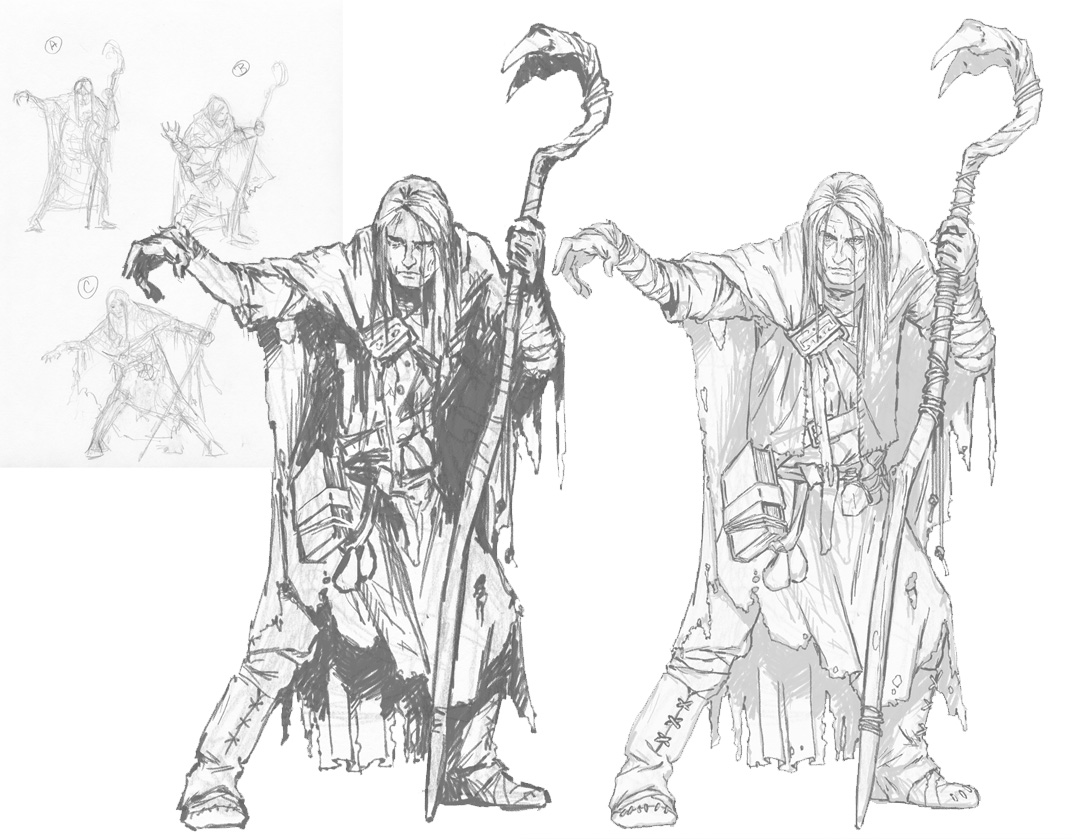
IGNORE THE MAN BEHIND THE CURTAIN
Like Core Space, Maladum was literally decades in the making. My friend, Rik, and I decided to write a fantasy book. This was in the nineties, we were in our late teens and anything was possible. At the time fantasy was still a big deal, but it had a B movie status, left over from the eighties when fantasy films were churned out for the straight to video market. Fantasy novels were also relegated to the nerd section of the bookstore but it was a big section. My experience of fantasy was Krull, Hawk the Slayer, the Dragonlance Chronicles and of course, J.R.R. Tolkien. I had no idea who George R.R. Martin was or The Wheel of Time so my fantasy experience was pretty much at a pop culture level, more HeroQuest and Fighting Fantasy than the Silmarillion. However, I had read a lot of weird sixties sci-fi which strayed into fantasy, including the author Michael Moorcock, and a shed load of post apocalyptic novels, aimed mostly at young people, such as The Day of the Triffids, The Tripods, Wild Jack and Riddley Walker. The ‘sci-fi as fantasy’ trope was common in the sixties but isn’t seen so much nowadays but I love it, way more than straight fantasy. At the time I’d yet to experience the genre mixing of the Dark Tower books but let’s say, they are an influence now.
So, Rik and I planned everything on a giant A0 drawing pad that I’m pretty sure still lurks in my mum’s attic. We decided early on that the final creatures would actually be aliens but otherwise it would be a fantasy world. I’m not entirely sure we were even that thoughtful about it, I think we just wrote whatever we felt like! We then wrote different chapters by ourselves and compared them afterwards. Although our writing styles are different, Rik is more comedic, I’m more moody, it worked surprisingly well.
So, you’re asking, where was Colin, Battle System’s head honcho, in all this? He was writing funny songs about our book on his guitar. Man, they were funny. And scathing. And accurate. And very likely the doom of our short-lived literary aspirations. Like most teenage pursuits the book was abandoned but never actually forgotten. Decades later, when Colin casually mentioned that it would be nice to create a fantasy version of Core Space I, just as casually, suggested that we set it in the far future so that we could tie it directly into Core Space. Colin liked the idea and we got to work. So, the genesis of Maladum is actually a story that Colin mocked in the nineties. I knew I’d get him back one day!
Back To The PResent
Fantasy Core Space (as we called it for a long time) started as a four page outline, that quickly grew to fifteen pages, and an accompanying short story. Colin and I brainstormed like crazy and I went away and wrote the treatment, which is basically the skeleton to hang the game on. All the ideas that had been dashed out had to be winnowed down to something that actually made sense to other people. The treatment included the basic premise and setting, the history of the world, what magic was, a list of creatures and characters and a tonne of miscellaneous game-play notes. Over the next two years this main document would have five major revisions. I also wrote a short story to help establish the world and the people within it. We used these two documents to frame the whole world.
Stewart (our Dread Overseer, don’t look him in the eyes) did the heavy lifting for the game mechanics using the original Core Space rules as a base but giving it a major overhaul, using what we’d learned from Dangerous Days and First Born as well as adding a completely new set of rules for magic. We would drip feed Stewart any lore that was missing, such as how the economies of Enveron worked, new characters, how Maladum itself worked (it had to follow real world physics rather than be supernatural), and ideas for any future game expansions.
I also drew the map of Enveron. This was never actually requested by Colin or Stewart so I did it in my spare time (writing the lore was just the tip of my duties at the time so I couldn’t afford to use actual work-time to draw it!). As it turned out the map was a big help. From this I created the kingdoms, the towns, the landscapes and the geo-politics. In my youth I was an arm chair traveller, I would look at maps and imagine what travelling to other countries would be like (which I eventually did as I got older, it’s a whole different experience!) and I can still get lost in the Enveron map, creating new scenarios. I used it as the basis for a list of towns that I wrote detailing their local history, politics and geography, about a fifth of which has seen print so far. I like to think that the Kingdoms of Enveron are detailed but also leave enough space for anyone to imagine any scenario.
Maladum took a long time, partly because we were a small team and we had other projects on the go at the same time, but mostly because it was complex. A game as expansive as Maladum has many moving parts, each part having a knock on effect on the others – move one piece and everything else has to change. We’re very proud of what we came up with, and it took the hard work of a lot of people to make it happen.
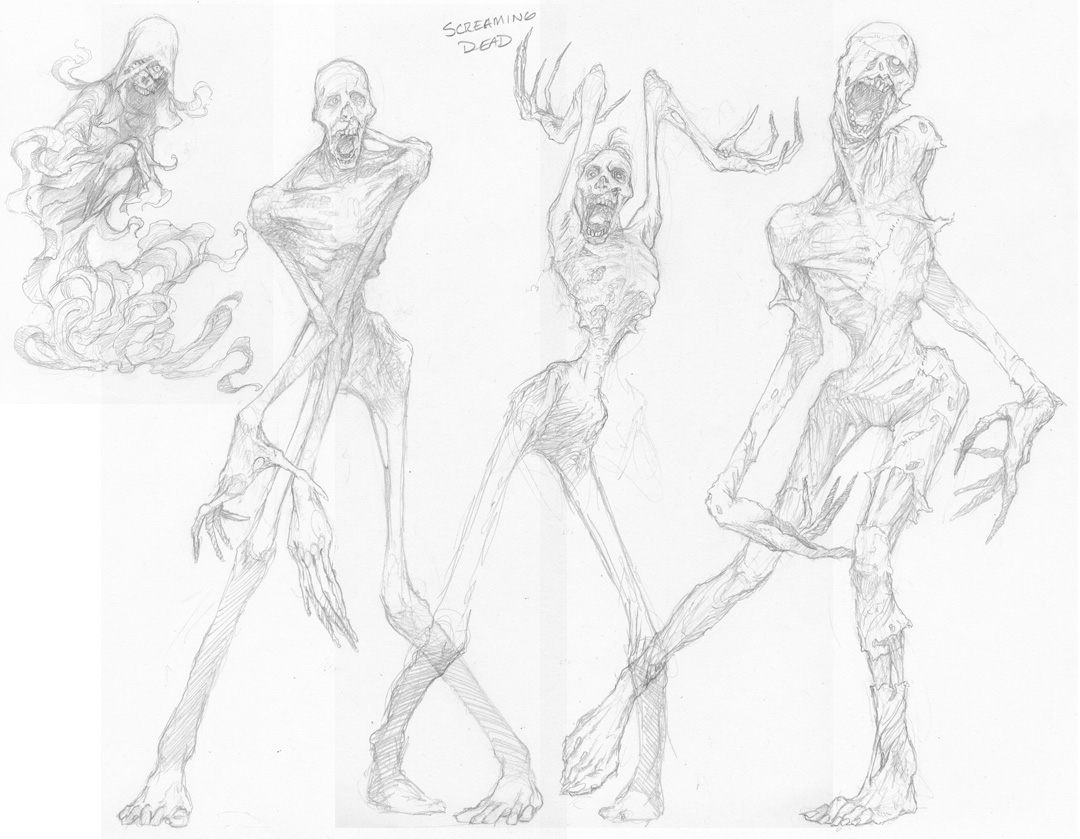
Questions Questions
Finally, thank you to those who asked questions about my last blog. Often writing the lore can be like working in a creative vacuum, people rarely mention it except when they don’t like it!
Question: How do you decide what makes it to the final game?
Answer: Mostly it’s pragmatism, some ideas won’t work in a game, or the tone is off, or it’s just simple logistics. For example, we created a character, Sheridan, for Maladum, he has a back story, artwork (that features prominently in the deluxe rulebook), even a finished model but he got cut at the last minute simply because we had too many adventurers! He is a Sharpe type character, tough and courageous and rough around the edges and we hope to include him in a later expansion.
Also, we’ve all got to be onboard. Here’s my initial write-up for the main villain in Maladum:
THE GREAT WYRM
When the Necromancer is close to defeat he will summon the Great Wyrm to take his place in time and space. A vortex opens and the Wyrm enters the world. Its head is that of a flayed horse, its lidless eyes staring madly, its lipless mouth screeching endlessly. Its body is like a worm or snake, coiled in over itself. It has a dozen limbs each resembling a human arm, complete with a human hand. Its skin is like stone and it sprays a venom from its mouth that will ignite if it touches bare flame. The venom will blind the victim and burn the skin if not treated promptly. If the Wyrm is defeated its remains are pulled into the vortex and the Necromancer is returned, the body frozen and lifeless as if it has been dead for centuries.
What might work in a novel or movie won’t always translate into other mediums, although I’m happy to say that many elements of this did go on to form the basis of Oblivion’s Maw. So in a way, the Wyrm lives on, just slightly less horrifying.
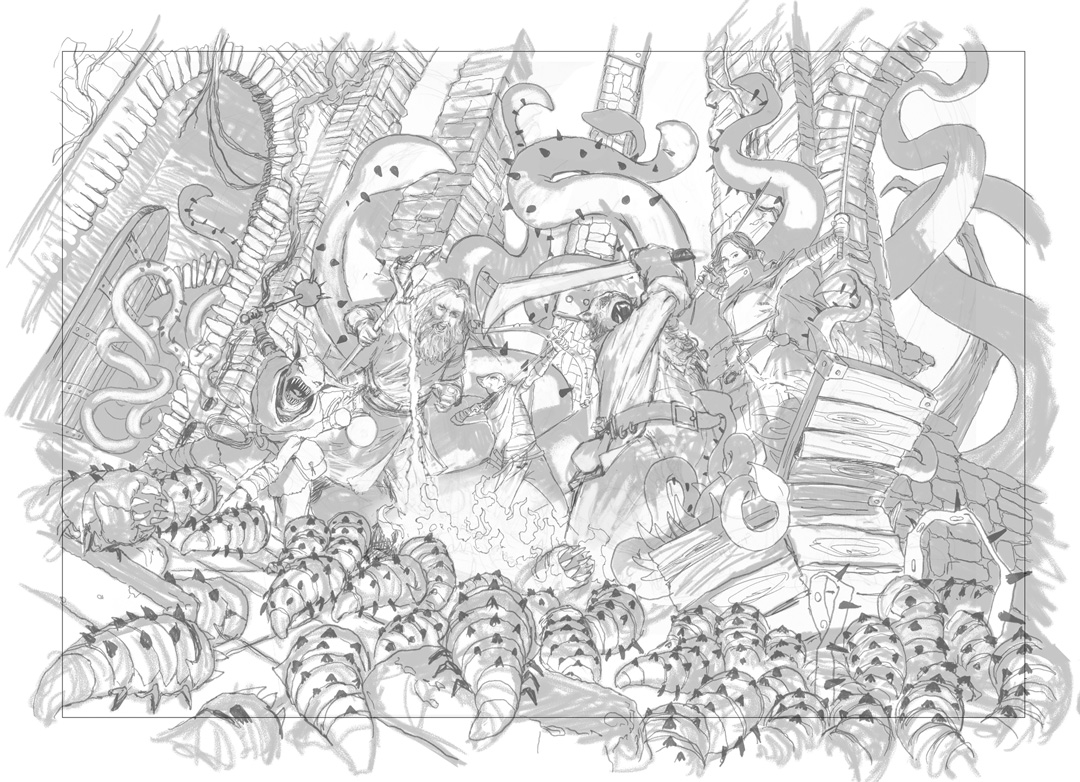
A lot of ideas are changed during the early development. A huge chunk of the Maladum lore was written in an unpublished short story, where there were more conventional looking elves and dwarves, the dwarves have blue skin and eyes that reflect like a cat’s and the elves were extremely dangerous and emotionally volatile. Although the Dwella and Eld (our take on elves and dwarves) ended up looking very different some of the traits made it through to the finished game. If there’s enough interest I may upload some of my unpublished stories for Core Space and Maladum, a sort of ‘What if?’ alternative to what we have here in this plane of existence! Let me know in the comments below.
Also, there’s often a difference of opinion. Colin didn’t want certain animals such as dogs or horses to exist in Maladum as he felt it took away from the fantasy, in the same way it would if there were dogs or horses in Star Wars. I disagreed, the gene farms of Mesa would have allowed for dogs and horses as well as any host of alien creatures. We eventually settled on hybrid animals, no Earthly dogs or horses were allowed but analogues would be acceptable, so instead of horses we would have alien mounts. Meanwhile, Nick, our artist, was completely oblivious to our creative bickering and painted a couple of normal house cats into the artwork of Ale and Adventure, making them canon!
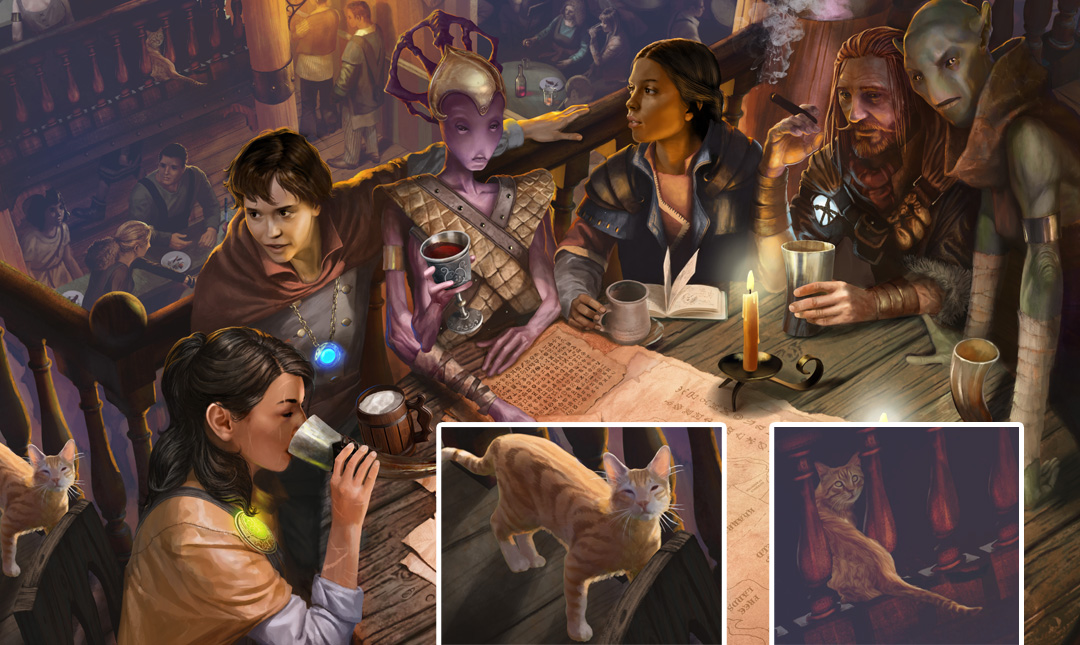
Next time I’ll be casting my cold steely gaze at Core Space, in particular the rise of the Purge, the creepy alien robots intent on reducing all organic life-forms into useful bio-mass!
If you have any comments about this article or questions about the lore of Maladum or Core Space feel free to drop them in the comments below, I’ll do my best to answer your questions in future articles.


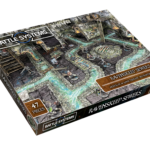
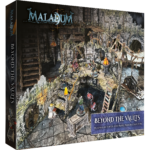
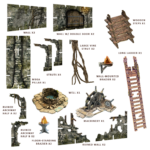
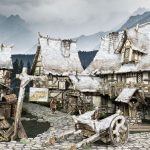
David Hebart-Coleman
July 22, 2025 at 1:32 pm
Comment was deleted by user.
Aurel
July 17, 2025 at 4:31 am
Comment was deleted by user.